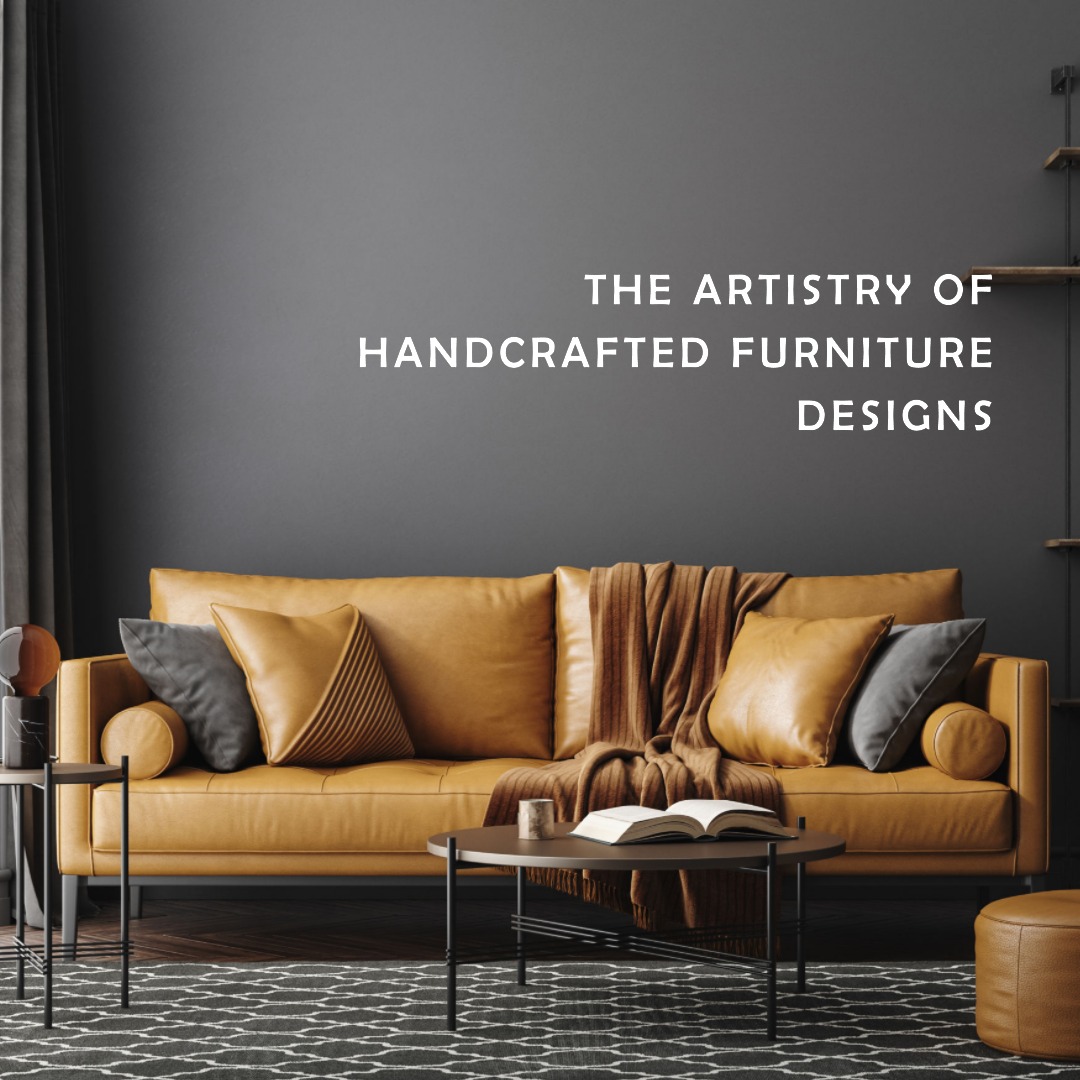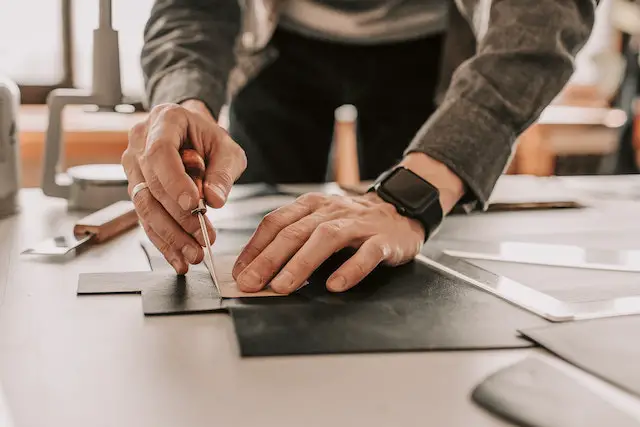
Handcrafted Furniture Designs
In a world of mass production, a quiet revolution is taking place. Handcrafted furniture is experiencing a renaissance. People are seeking authenticity and unique pieces that tell a story.
The Artistry of Handcrafted Furniture Designs delves into this captivating trend. It celebrates the skill and artistry of artisans who pour their passion into every creation. From carefully selecting materials to meticulous design, handcrafted furniture is a testament to human ingenuity.
We uncover the secrets behind the art of craftsmanship and the creativity that fuels it. Step into the world where functional objects become works of art. Discover the artistry of handcrafted furniture designs and unlock the stories behind each masterpiece.
The rise of handcrafted furniture
The rise of handcrafted furniture is a response to the dominance of mass-produced pieces. In the past, furniture production became industrialized, sacrificing the artistry of craftsmanship.
This shift profoundly impacted the quality and uniqueness of furniture designs. However, a new wave of consumers is seeking more than cookie-cutter furniture. People desire pieces that reflect their individuality and tell a story.
As a result, the demand for unique and personalized items has surged. This shift in consumer preferences has paved the way for the resurgence of artisanal techniques. Artisans have revived traditional woodworking methods, infusing their creations with a touch of heritage and history.
These skilled craftsmen and craftswomen have dedicated themselves to honing their skills, preserving traditional techniques, and breathing new life into furniture-making. Furthermore, the revival of artisanal craftsmanship celebrates the mastery of hands-on skills and promotes sustainability.
Skills and expertise required for handcrafted furniture
Handcrafting furniture demands a remarkable set of skills and expertise. Precision and attention to detail are paramount in this art form. Each cut, joint, and carve must be executed with mastery.
A deep understanding of wood properties and structural integrity is essential. Patience is key, as the process often involves hours, days, or even weeks of meticulous work. A keen sense of design and aesthetics guides every decision.
Problem-solving skills come into play when encountering challenges or complexities. Additionally, adaptability allows craftsmen to respond to the unique characteristics of each piece of wood.
And above all, a passion for the craft fuels the dedication and commitment required to create masterpieces. Handcrafting furniture is not merely a job but a lifelong pursuit of perfection and artistic expression.

Photo by Vlada Karpovich
The art of handcrafting furniture
The art of craftsmanship in furniture design is defined by its meticulous attention to detail and unparalleled precision. Every component is carefully crafted, ensuring flawless joints and seamless connections.
Handcrafted pieces stand out due to the sheer dedication put into every minute aspect. It is in the intricate carvings, the delicate inlays, and the refined finishes that the true artistry is revealed. The artisan's hands bring life to their creations, showcasing their unique artistic expression.
Each piece tells a story, reflecting the individuality and creativity of the craftsman. Every decision is a deliberate artistic expression, from the choice of materials to the design elements incorporated.
No two handcrafted pieces are identical, making them unique. This level of individuality sets handcrafted furniture apart, elevating it to functional art. The art of craftsmanship in furniture design is a testament to the mastery and creativity of the artisans who dedicate their lives to this ancient craft.
The design process of handcrafting furniture
Overall, the design process of handcrafted furniture involves a meticulous step-by-step walkthrough followed by skilled artisans. It begins with understanding the customer's vision and requirements. Collaboration between the artisan and the customer is crucial to ensure a harmonious outcome.
The artisan brings expertise, offering insights and suggestions to enhance the design. From sketches to 3D models, the creative process takes shape. So, ideas are refined, proportions are balanced, and functionality is considered.
The artisan's creativity shines as unique designs are conceptualized and brought to life. Attention is given to every detail, from the choice of materials to the intricate joinery.
Prototypes are crafted to test and perfect the design. The artisan's skill and experience guide the construction process. The final piece is a testament to the seamless blend of artistry and functionality.
The design process of handcrafted furniture is a captivating journey of collaboration, creativity, and craftsmanship, resulting in truly exceptional pieces that stand the test of time.
Handcrafted furniture stands out and can last for years

Photo by Tuğçe Açıkyürek
Materials for handcrafted furniture
The materials used for handcrafting furniture are significant in the outcome. Selecting high-quality and sustainable materials is crucial. They contribute to the durability and longevity of the piece.
Natural materials, in particular, add character and warmth to handcrafted furniture. Wood grains, textures, and natural colors create unique and visually appealing aesthetics. The choice of materials influences the overall design and artistic expression.
For example, reclaimed wood can bring a rustic charm, while exotic hardwoods can add a touch of luxury.
The connection between the materials used and the final artistic outcome is undeniable. Each material has its distinct qualities that impact the design process. The artisan considers strength, flexibility, and grain patterns when working with the materials. The selected materials become the canvas for the artisan's creativity and craftsmanship.
Overall, handcrafted furniture celebrates the beauty and versatility of natural materials, resulting in pieces that are not only visually stunning but also sustainable and timeless.
Handcrafted furniture and its functionality
It goes beyond mere functionality; it becomes a form of functional art. Each piece serves its intended purpose while also being aesthetically pleasing. The artisan pays meticulous attention to ergonomics and usability, ensuring the furniture is beautiful and practical. Even though these pieces are made with such care, they can still be easily transported.
Experts from Here & Now Movers say that the right packing materials are all you need to transport your handcrafted furniture into your new home safely. So, when moving, you won’t have to stress over the safety of your furniture.
The artistic details and unique design elements add character and personality to the furniture, making it stand out from mass-produced alternatives. Handcrafted furniture invites interaction and admiration, as it embodies the artisan's skill, creativity, and dedication.
It becomes an expression of individuality and craftsmanship, enhancing the living environment and enriching the daily experiences of those interacting. So, handcrafted furniture becomes a conversation starter and a functional work of art that adds a touch of beauty and elegance to any space.
Handcrafted furniture requires a lot of time to design

Photo by Ivan Samkov
Preserving handcrafted furniture today
Today, preserving the artistry of handcrafted furniture faces challenges. The industrialized production process has led to a decline in appreciation for artisanal craftsmanship. However, supporting handcrafted furniture and preserving traditional techniques is vital.
Overall, this ensures the continuation of a rich cultural heritage and the survival of time-honored skills. By supporting local artisans, we can foster a sustainable market for handcrafted furniture and provide livelihoods for skilled artisans.
Initiatives and organizations dedicated to promoting handcrafted furniture play a crucial role. Moreover, they raise awareness, provide training, and create platforms for artisans to showcase their work.
These initiatives also educate consumers about the value of handmade pieces and the stories behind them. We can contribute to a more sustainable and diverse design industry by embracing handcrafted furniture.
Through collective efforts, we can preserve the artistry of handcrafted furniture. Finally, we can celebrate the skill and creativity of artisans and ensure that this form of art continues to thrive in our modern world.
The advantages of handcrafted furniture
Handcrafted furniture is an overall better option for several compelling reasons.
First, it offers superior quality and durability. Each piece is created by skilled artisans who prioritize attention to detail.
Second, handcrafted furniture provides a unique and personalized touch. It reflects the artisan's creativity, allowing for customization and individuality.
Third, it embraces sustainability. Handcrafted furniture often utilizes high-quality, sustainable materials, reducing environmental impact.
Fourth, it adds character and charm to any space. So, the artistic details and craftsmanship create a captivating ambiance.
Fifth, handcrafted furniture supports local artisans and preserves traditional techniques. By choosing handcrafted pieces, we contribute to the livelihoods of skilled craftsmen and the perpetuation of cultural heritage.
Last, handcrafted furniture is an investment. Its timeless appeal and exceptional craftsmanship ensure its longevity, making it a valuable heirloom.
Overall, handcrafted furniture offers unmatched quality, artistic expression, sustainability, uniqueness, and support for artisans. It brings artistry and functionality together, transforming living spaces into showcases of craftsmanship and individuality.
The artistry of handcrafted furniture makes it worth the price

Photo by cottonbro studio
Final Thoughts
Handcrafted furniture stands apart with its meticulous attention to detail, precision, and personalized touch. Choosing high-quality, sustainable materials adds to its durability and environmental appeal.
Each piece becomes a functional art, elevating living spaces and creating character and charm. By supporting local artisans and preserving traditional techniques, we contribute to continuing a rich cultural heritage.
Initiatives and organizations promoting handcrafted furniture are vital in fostering awareness and appreciation. Handcrafted furniture is more than just furniture. It is a cherished possession and a legacy to be passed down through generations.
Let us celebrate the artistry of handcrafted furniture designs and embrace the beauty, craftsmanship, and individuality that each piece embodies.
